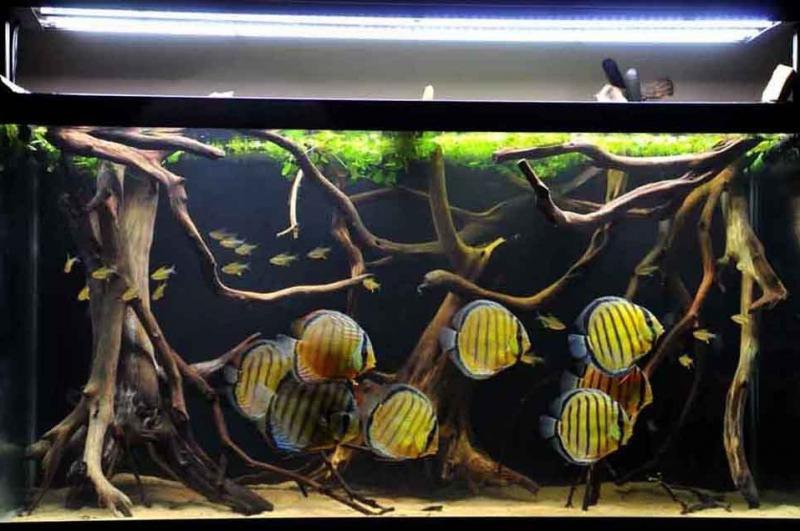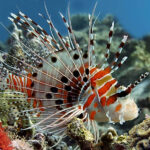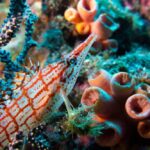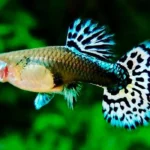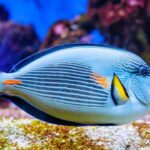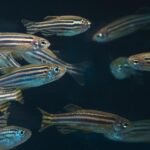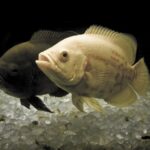A Crucial Step Most Aquarists Skip
Quarantine New Fish. The temptation to plop them straight into your show tank is irresistible. But wait—what you do next might make the difference between a successful, healthy community and a tank-wide catastrophe. Quarantine new fish isn’t merely a good idea—it’s an essential step in responsible fishkeeping. Consider it a type of aquatic social distancing
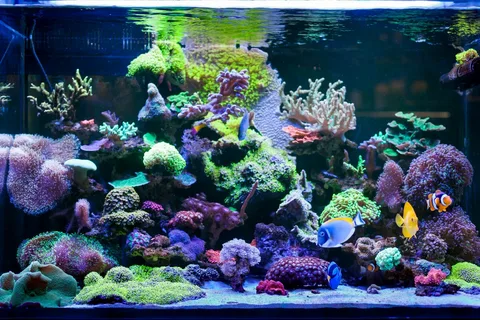
Why Quarantine New Fish Matters
Protecting Your Investment
Quarantine New Fish. Aquariums are not inexpensive. Add up the tank, filtration, substrate, plants, lighting, and, naturally, the fish themselves, and you can quickly spend hundreds—if not more than a thousand—dollars. Quarantine new fish shields that investment from possible parasites, bacteria, viruses, and fungal infections.
Hidden Hitchhikers
New fish can look wonderfully healthy, yet numerous pathogens do not display initial symptoms. Disorders such as ich (Ichthyophthirius multifiliis), velvet dinium, and columnaris take days or weeks to develop. These stealthy aggressors can quickly infect and kill seemingly healthy fish within a community tank.
What You Need to Set Up a Quarantine Tank
The Bare Essentials
Tank: 10–20 gallons is ideal for most small to medium fish.
Heater: Maintain a stable temperature appropriate for the species.
Sponge Filter or Hang-On-Back Filter: Provides biological filtration without too much current.
Thermometer: Keep a close eye on the water temperature.
Air Pump (Optional): Improves oxygenation.
Hiding Places: PVC pipes, plastic plants, or ceramic caves for stress reduction.
Bare Bottom: Easier to clean and monitor waste or signs of illness.
Optional but Useful
Light: Helps you inspect the fish more clearly.
Lid or Cover: Prevents jumpers from escaping.
Test Kits: Monitor ammonia, nitrite, nitrate, and pH levels.
Medications: A basic medicine cabinet with ich treatment, broad-spectrum antibiotics, and antifungals.
Setting Up the Quarantine Tank
Step-by-Step Setup
Clean Everything: Use warm water and no soap to rinse the tank and equipment.
Install Equipment: Add the heater, filter, thermometer, and optional air pump.
Fill the Tank: Use aged water from your main tank or tap water that has been dechlorinated to fill the tank.
Include places to hide: Keep the decor simple but effective for relieving stress.
Cycle the Tank: Ideally, you’ll have a cycled sponge filter ready. If not, be prepared to monitor ammonia closely and perform daily water changes.
Cycling Tips
Use media from an established tank to speed up cycling.
Dose with ammonia daily if fish are not yet added.
Alternatively, use products like bottled nitrifying bacteria to jumpstart the cycle.
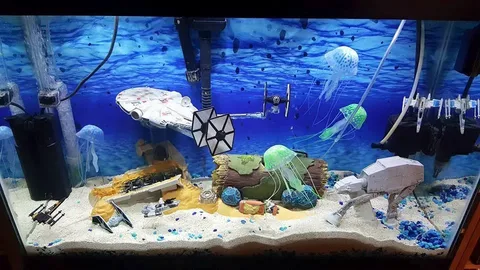
The Quarantine New Fish Process
Acclimation
Quarantine New Fish Before placing your new fish into the quarantine tank:
Float the Bag: Let the sealed bag float in the quarantine tank for 15–20 minutes to equalise temperature.
Drip Acclimation (Optional but Recommended): Slowly introduce tank water into the bag over 30–60 minutes to help the fish adjust to water chemistry.
Transfer Fish: Use a net to move the fish into the quarantine tank, discarding the bag water to avoid contamination.
Observation Phase
Duration: Keep new fish in quarantine for at least 2–4 weeks. Some aquarists extend it to 6 weeks, especially if treating for parasites.
Daily Checks: Look for signs of disease: clamped fins, laboured breathing, white spots, redness, excessive hiding, or erratic swimming.
Feeding: Offer high-quality foods to boost immunity. Live or frozen foods can be great, but ensure they are parasite-free.
Water Testing: Monitor ammonia, nitrites, and nitrates. Perform water changes as needed to maintain stability.
When and How to Medicate
The Preventive vs. Reactive Debate
While some aquarists prefer to wait for signs of illness, others medicate all new fish proactively. There’s merit to both sides.
Preventive Approach:
Dose with antiparasitic, antibacterial, and antifungal treatments as a precaution.
Popular for high-risk fish like wild-caught specimens or sensitive species like discus.
Reactive Approach:
Observe closely and treat only when symptoms appear.
Reduces stress from unnecessary medications and avoids overuse of chemicals.
Common Medications
Ich-X: Effective against ich and other protozoans.
PraziPro: Treats flukes and internal worms.
Maracyn or Kanaplex: Broad-spectrum antibiotics for bacterial infections.
Melafix/Pimafix: Mild antibacterial and antifungal treatment.
Dosing Tips
Always follow manufacturer’s instructions.
Remove carbon from filters before medicating.
Monitor fish behavior closely—some species react poorly to certain medications.
Transitioning to the Main Tank
Final Checks
No signs of disease for at least 7 days.
Stable eating behavior and normal swimming patterns.
Clean quarantine water parameters.
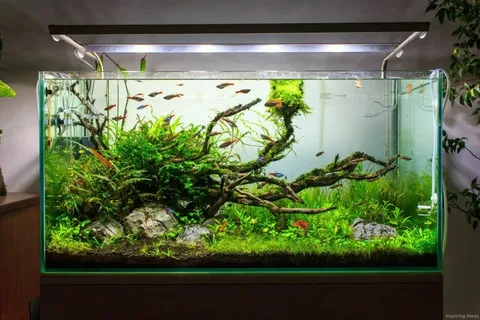
Special Cases
Invertebrates and Plants
Most invertebrates (shrimp, snails) should also be quarantined to prevent introducing parasites.
Live plants can harbour snails or diseases; soak them in alum or potassium permanganate solutions before adding them to your tank.
Aggressive or Territorial Fish
For fish like cichlids or bettas, a longer quarantine period may help calm them down before introducing them to established hierarchies.
Consider rearranging the tank before adding new fish to reduce territorial aggression.
What Can Go Wrong (And How to Fix It)
Quarantine Tank Crashes
Symptom: Sudden ammonia spikes or unexplained fish deaths.
Solution: Perform emergency water changes, add beneficial bacteria, and reduce feeding.
Persistent Illness
Symptom: A fish shows signs of sickness despite medication.
Solution: Reassess the diagnosis. Try a different treatment or consult with a vet specialising in fish.
Cross-Contamination
Symptom: The disease spreads from quarantine to the main tank.
Solution: Dedicate equipment for each tank and disinfect after every use.
Tips from Long-Time Aquarists
“Never trust a healthy-looking fish at first glance. Quarantine will reveal what the stress of a new environment hides.” – Marcus T., aquarist for 20+ years.
“I’ve lost entire tanks because I skipped quarantine once. Never again.” – Alicia K., reef tank enthusiast.
“Even plants can introduce nasties. Treat everything like a potential threat until proven safe.” – Dan L., freshwater planted tank keeper.

Conclusion
Quarantine new fish before placing them into your main aquarium can be something of a pain to do, especially when you’re eager to see your new additions swimming with the rest of your aquatic community.
But skipping this critical step is one of the biggest mistakes even experienced aquarists make.
Each new fish is a variable that can change that dynamic. Quarantine New Fish. By quarantining, you control that variable. It’s not only clever fishkeeping—it’s ethical, humane care for the animals you’ve decided to bring into your house. Quarantine New Fish. So the next time you introduce a new finned friend to your home, don’t speed along. Allow them to adjust, and provide your established tank the security it deserves.
Think of quarantine as an insurance policy. Quarantine New Fish. It only takes a few extra weeks of patience to prevent months of frustration and fish loss. Set up that quarantine tank. Watch, wait, and ensure your fish start their new life the right way—safe, healthy, and ready to thrive.
The dangers—introducing parasites, bacteria, illness due to stress, and even killing your whole tank—far outweigh the slight inconvenience of setting aside a separate quarantine area. Quarantine New Fish. Your new fish will be able to acclimate, get over the stress of transportation, and be closely monitored for disease in a secure setting if quarantine is done properly. Quarantine New Fish. It is what calms your mind, saves you cash, and, most importantly, maintains the health and harmony of your aquarium. Remember, your tank is an environment, not a container of water.
FAQs
Do I really need to quarantine new fish from a trusted pet store?
Yes. Fish that carry diseases or parasites can be sold unknowingly by even reputable pet stores. Fish are often housed in shared water systems, meaning one sick fish can expose many. Your established tank is safeguarded from unexpected outbreaks by quarantine.
Can I quarantine multiple fish at once?
Yes, as long as their behaviour and requirements for the environment (temperature, pH, etc.) are compatible. However, if one fish exhibits symptoms of illness, further isolation may be required to prevent disease transmission to other fish.
Should I medicate new fish during quarantine, even if they look healthy?
This depends on your approach:
The preventive method involves treating all new arrivals with general anti-parasitic and antibacterial medications.
The observation method involves only treating fish if symptoms appear.
Both methods have pros and cons. If you’re unsure, start with observation and act quickly if symptoms arise.
Can I use my main tank water in the quarantine tank?
You can use dechlorinated tap water or water from a healthy, established tank. Just ensure that no contaminants are transferred. Never use water from a tank with recent illness or outbreaks.
Do I need to cycle the quarantine tank?
Yes, ideally. A cycled quarantine tank helps avoid toxic ammonia and nitrite spikes. To protect your fish, use ammonia detoxifiers and perform frequent water changes if cycling is not possible.
Can I quarantine new fish in a bucket or small container?
While not ideal, a large, food-safe plastic container can be used in emergencies. It should be aerated, heated if necessary, and monitored closely. However, a proper quarantine tank should be used instead of this as a temporary fix.
